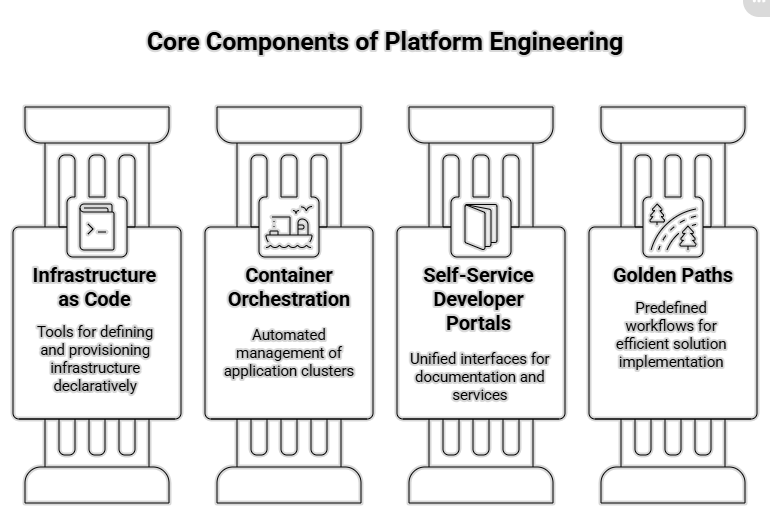
Technology is advancing rapidly, and as a company, you cannot fall behind: you need robust and scalable infrastructures and software architectures to compete. This is where platform engineering comes into play, the ideal discipline for managing modern digital solutions.
What exactly does platform engineering involve?
Platform engineering is the art of designing and maintaining internal platforms that enhance the agility and productivity of development teams. These platforms, known as Internal Developer Platforms (IDP), provide developers with a self-service environment with pre-established tools, workflows, and standards.
The essence of this discipline is that it treats developers as internal customers. The platform is conceived as a product, with improvements, iterations, and satisfaction metrics, rather than being just a technical tools layer.

Understanding the software platform
A software platform is an organized environment that integrates infrastructure, tools, services, and development processes into a cohesive ecosystem. Its main goal is to reduce friction in the software lifecycle: from environment creation, deployments, testing, and security to continuous operation.
In other words: the software platform is the foundation upon which your teams can build digital products faster and with fewer errors.
Key tools in platform engineering
Implementing an internal platform is based on a set of technologies and methodologies. Among the most notable are:
Infrastructure as Code (IaC)
Tools like Terraform, Pulumi, or Ansible allow you to define and provision infrastructure declaratively and repeatedly, which facilitates scalability and consistency.
Container orchestration
Kubernetes is the most common alternative, allowing the management of application clusters in an automated way. Add-ons like Helm or ArgoCD further enhance the experience.
Self-service developer portals
Interfaces like Spotify’s Backstage.io unify documentation, APIs, and ready-to-use services, simplifying the developer’s work.
Golden paths
These are predefined and optimized workflows that teams can follow to implement solutions quickly, reducing cognitive load and the risk of errors.

Platform engineering vs. DevOps
Usually, when you are going to hire a technology partner focused on improving architectures and systems, the question arises: are platform engineering and the DevOps approach different? Let’s answer it.
DevOps: culture and practices
DevOps is a culture within companies that seeks to bring together development and operations through automation, CI/CD, and collaboration between teams.
Platform engineering: DevOps made real
Platform engineering takes DevOps ideas and turns them into something tangible: a centralized place that provides those practices ready to use.
Key differences
| Aspect | DevOps | Platform engineering |
|---|---|---|
| Mindset | Culture and ideas. | Putting it into practice with a tangible platform. |
| Users | Collaboration between development and operations. | Developers are the company’s internal customers. |
| Outcome | Accelerates delivery through practices and automation. | Creates the structure for that speed to be sustained and scaled. |
At Rootstack, we understand that your focus should not be on tweaking Kubernetes or Terraform, but on creating products that change your industry. Our specialists design unique internal platforms with automation, self-service, and unified security, so your development teams can deliver value faster and with fewer obstacles.
We recommend this video






